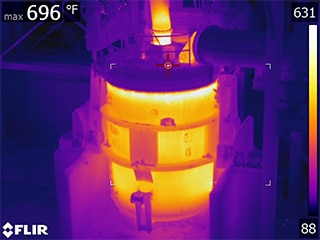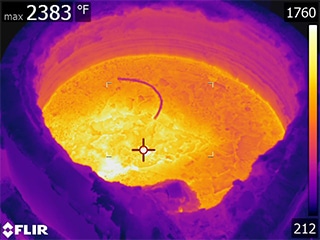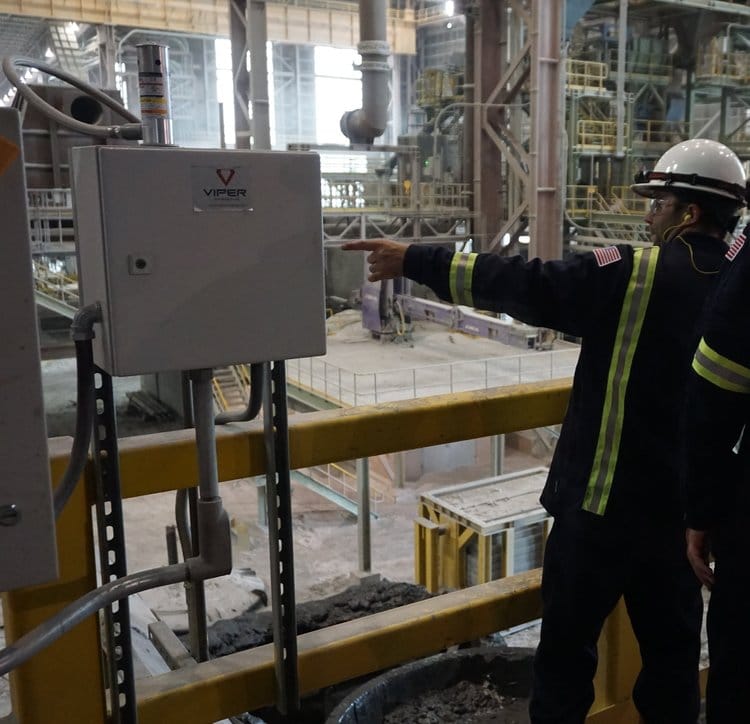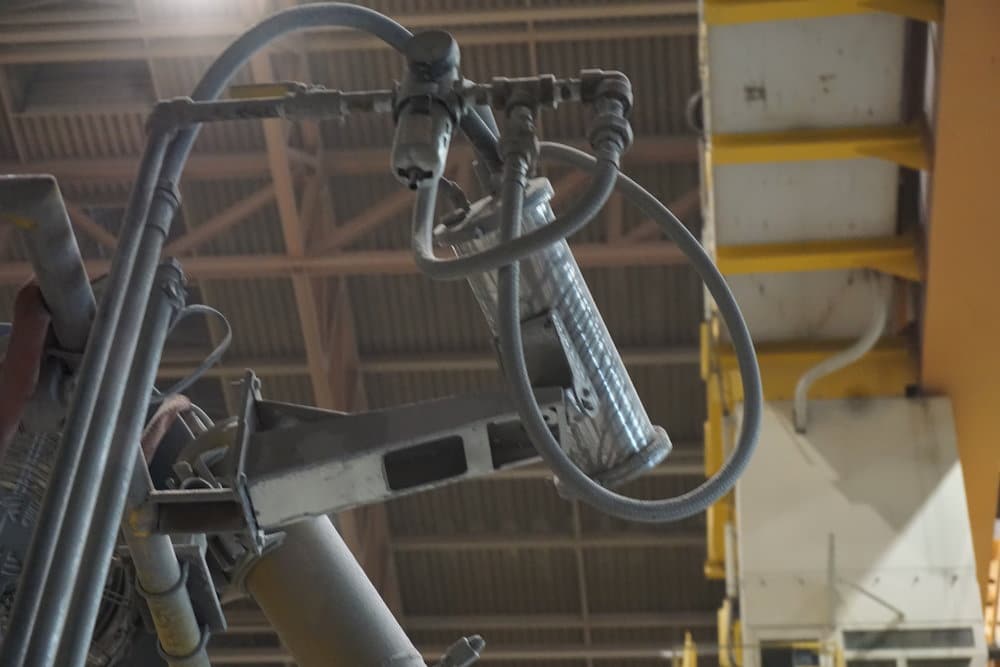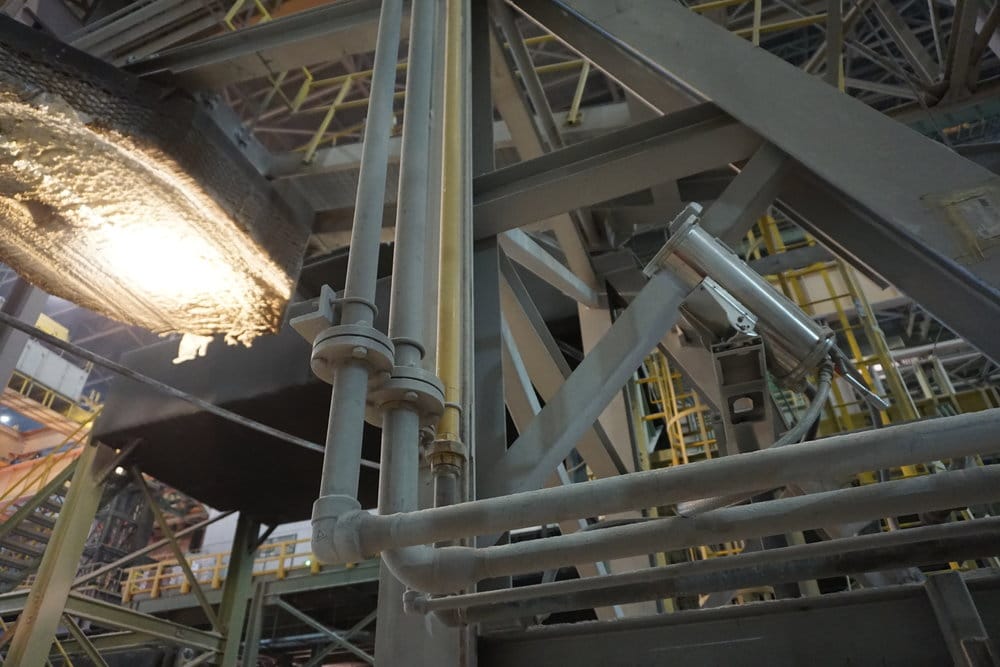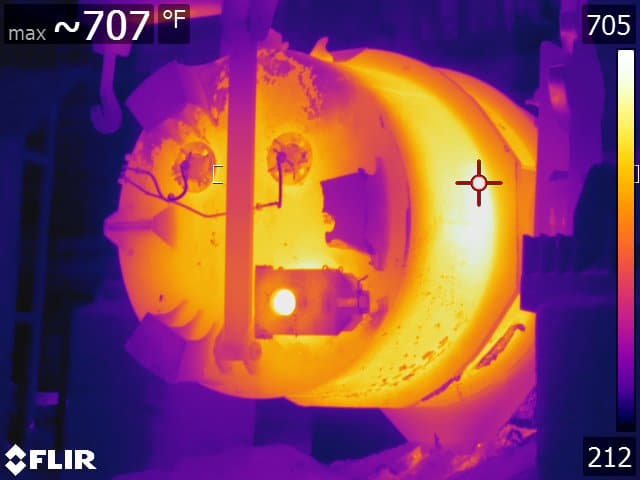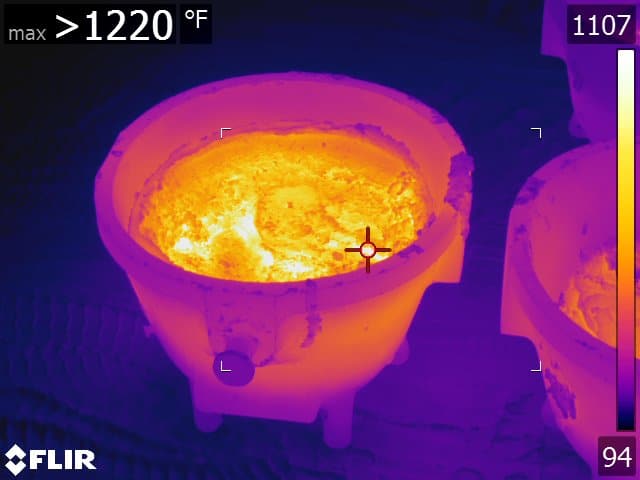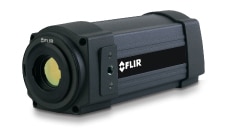Designing the Future of Steel Ladle Refractory Monitoring
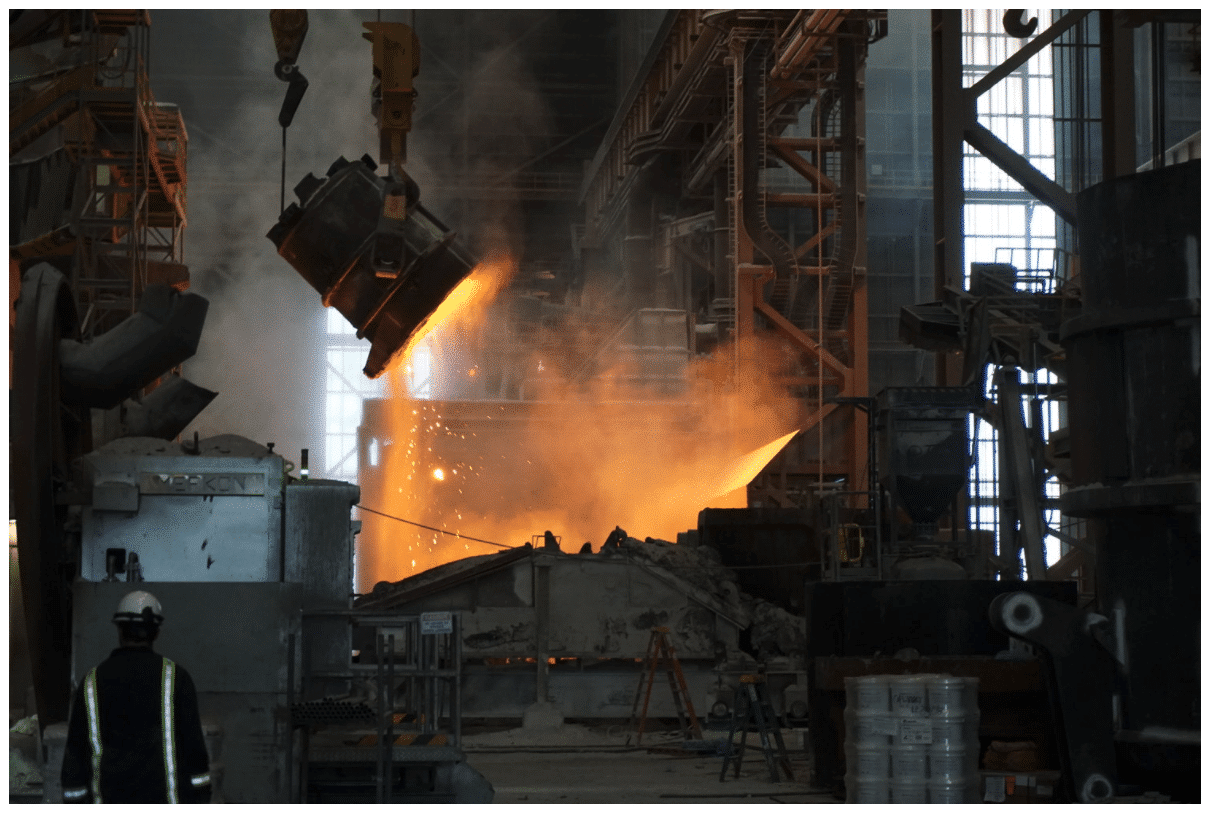
Helping a Global Leader of High Performance Steel Reduce Transformation and Maintenance Costs
OVERVIEW
Steel mills world-wide use refractory lined ladles to store and transport molten steel. Over time, the refractory linings degrade or develop cracks which exposes the outer shell of the ladle to excessive temperatures. If not caught in time, a molten metal breakout can occur, threatening the lives of plant personnel and causing downtime and significant damage to equipment. It is for this reason an EAF/AOD Area Electrical Engineer for an international steel company specializing in high performance steel production contacted Viper Imaging. Traditional monitoring methods had proved ineffective in preventing breakouts, so they needed a solution that would provide complete and constant temperature monitoring.
This case study was conducted with the cooperation of an integrated stainless steel mill which employs nearly 1,000 employees. A leader in sustainable production, this company follows science-based targets and has strict chemistry process standards. With the end product of stainless steel slabs, the mill takes in raw material, melts it with alloy additions for stainless and removes any carbon. Customers for this high performance stainless steel product cover a broad spectrum – from automotive products to appliances to structural steel. Monthly production at this mill is 80k+ tons with an annual forecast of about 900k tons. With this kind of production, one can clearly see the need for minimizing downtime as well as reducing transformation and maintenance costs.
CHALLENGE
Not only are ladle repairs very costly, $15 – $30k depending on the specific location on the ladle according to the engineer, production loss equates to about $15k per minute of downtime. The corporate target for plant uptime is 96%. Since implementation of Viper’s Ladle Refractory Monitoring System, they report an impressive 98.6% plant uptime at last measurement. The engineering team agreed that the investment in Viper’s monitoring system is easy to justify when one sees the results.
Before contacting Viper Imaging, the engineering team had tried other solutions for measuring ladle reliability. These included handheld temperature measurement, thermocouples, visual inspection and laser temperature measurement. None of these methods were effective in providing the complete data the team of engineers need.
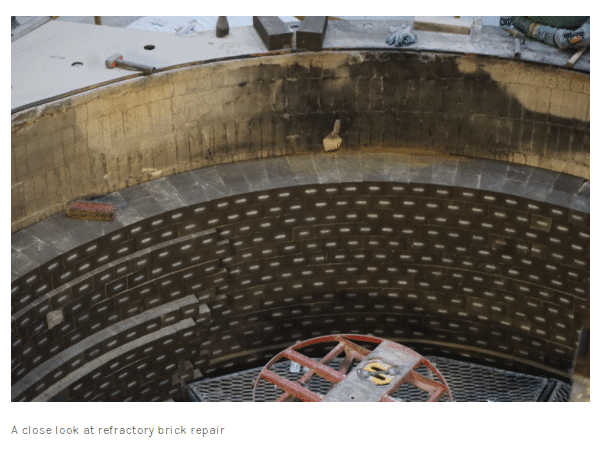
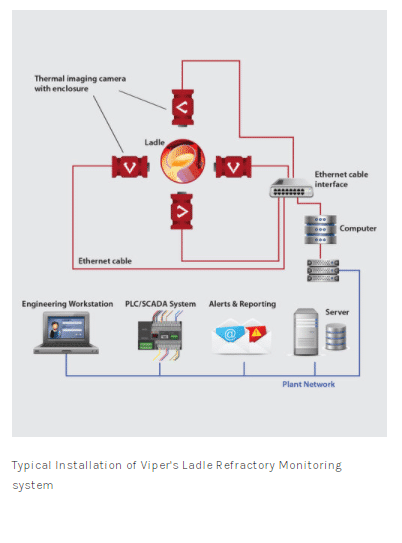
SOLUTION
The Ladle Refractory Monitoring System from Viper Imaging provides an accurate, reliable measurement solution for the team. Four FLIR thermal imaging cameras, housed in industrial enclosures were installed in fixed positions where they have a clear field of view of the ladle. The FLIR cameras are integrated with ViperVision software which directly communicates with the plant control system via a set of discrete alarm outputs. The cameras process thermal images of the ladle, measuring the temperature of the ladle’s surface and other specific regions of interest (ROI) as a means of assessing the extent of wear. The software analyzes and compares the data against the ladle’s predefined parameters set by plant engineers, and it will trigger an alarm if warranted. Defining ROIs also allows Viper’s software to ignore objects around the ladle which results in fewer unwanted alarms. The thermal images and temperature data are stored for later comparison, providing engineers the data they need to make critical decisions about the repair and renewal of ladle linings. The Refractory Engineer says he relies on the alarm system within the software for protection from breakouts. He begins every day by reviewing a thermal image of each ladle looking for abnormalities.
OUTCOME
Since implementation of Viper’s Ladle Refractory Monitoring System, both the EAF/AOD Area Electrical Engineer and Refractory Engineer cite these key benefits:
-
Improved safety for plant personnel
-
Reduced risk of equipment damage,
-
Prevention of metal breakouts,
-
Saved time switching ladles,
-
Increased efficiency of ladle lifetime, and
-
Increased plant uptime.
In the year following implementation, this mill was recognized with a company award for best operational improvements in the American metal market. Additionally, the engineers shared that they recently broke a record for the number of heats on an AOD vessel campaign. He said, “The cameras [system] played a large part of it. It allowed us to monitor the shell temperatures and look for any abnormalities or sudden increases in the temperature while we were running the vessel out the last couple days.” The system recently triggered an alarm for high shell temperature. Upon inspection, they found thinning refractory brick. This prevented a breakout and damage to equipment while maintaining safety. “A testament for the effectiveness of a properly utilized system,” according to the EAF/AOD Area Electrical Engineer.
CONCLUSION
As this study illustrates, ViperVision software integrated with FLIR thermal imaging cameras provide a consistent and effective solution for measuring temperature to assess ladle reliability. For more information about Viper’s Ladle Refractory Monitoring system, or any other industrial process monitoring applications, please contact us!
Want to receive news and updates delivered directly to your inbox? Subscribe to our newsletter!

